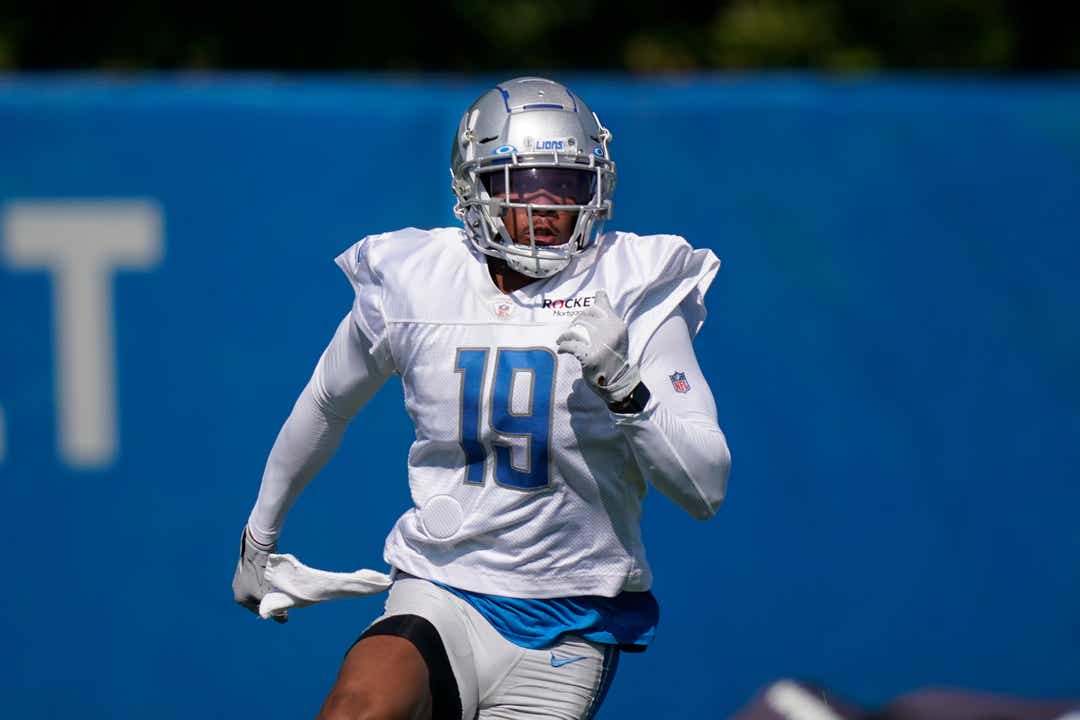The Detroit Lions will be missing their starting right tackle for Sunday’s season opener against the Chicago Bears, while wide receiver Kenny Golladay has been listed as doubtful for the contest due to a hamstring injury.
Golladay, who led the NFL in touchdown receptions last year, didn’t miss a game in 2019. The hamstring injury, which first cropped up during Wednesday’s practice, is a day-to-day issue, according to coach Matt Patricia.
As for offensive tackle Halapoulivaati Vaitai, Detroit’s top free-agent addition, he’s dealing with a foot injury. It’s expected he’ll be replaced in the lineup by Tyrell Crosby, who has started seven games as an injury replacement the past two seasons.

In addition to those two, the Lions will also be without safety and special teams standout C.J. Moore, as well as rookie tight end Hunter Bryant. Both are also dealing with hamstring injuries.
Wide receiver Danny Amendola (hamstring), cornerback Jeff Okudah (hamstring), defensive end Julian Okwara (knee), defensive tackle Da’Shawn Hand (groin) and cornerback Darryl Roberts (groin) are all questionable.
The only piece of good news from the week’s injury report is rookie running back D’Andre Swift is a go after a fully practicing Friday with a hip injury.
Detroit’s report steadily grew heading this week. The biggest problem for the team has been the hamstring injuries, with five players missing practice time relating to the upper leg muscle.
Patricia doesn’t think it’s a coincidence his team is dealing with a significant number of these injuries, in large part due to the condensed offseason. With that in mind, he’s taking every precaution to ensure minor injuries don’t transform into lingering issues.
More: Cornerback Jeff Okudah showing Lions that patience with rookie will pay off
“We actually did a great study of this in what a normal season kind of looks like,” Patricia explained Friday morning. “We see in the springtime, as we get into OTAs and that Phase 2 (of the offseason program), that’s where we really see the joint stiffness and soreness. So a lot of the knees, the ankles, the hips, a lot of those type of injuries come up for us in the spring. Then as we progress toward training camp, that’s when we start to see more of the soft tissue (injuries), where we’re amped up to speed and the length of the plays and how far downfield and things like that and the groin issues that maybe come with some of the defensive players with change of direction. So that’s like a normal year of where the bodies are adapting to getting into football shape.
“What we’re seeing right now is a condensed version of a spring and summer all in four weeks, where we initially got onto the field, and we saw a lot of the joints and some of those things that were bothering guys,” Patricia said. “Now we’re kind of working into that training camp mode, even though I know the regular season is starting, but timeline of guys getting ready to go and prepare – where now it’s a little bit more of the soft-tissue stuff.”
Patricia noted he’s also studied how players suffered more major injuries in 2011, after that year’s lockout forced a similarly accelerated offseason. And while there’s no certainties in football, the training staff is doing everything it can to avoid those types of catastrophic injuries by easing off the gas at the earliest sign of discomfort.
“I would say the one thing that we’re trying to do, and really why you’ll see it on the injury report a lot, is we’re trying to prevent them from being long-term type of soft-tissue injuries,” Patricia said. “So even if we get guys that are tight, that may be on the milder side, maybe a seven-, 10-, 14-day type stuff, we’re trying to prevent the four-week type of injury there.”